2978-58-7
| Name | 2-methylbut-3-yn-2-amine |
|---|---|
| Synonyms |
3-amini-3-methyl-1-butyne
2-methyl-3-butyn-2-ylamine 2-Methyl-3-butyn-2-amine MFCD00008052 1,1-Dimethylprop-2-ynylamine 3-Amino-3-methyl-1-butyne 3-Butyn-2-amine, 2-methyl- 1-amino-1,1-dimethyl-2-propyne 2-methylbut-3-yn-2-amine 1,1-Dimethyl-2-propyn-1-ylamine 1,1-Dimethylpropynylamine 3-Butyn-2-amine,2-methyl 1,1-Dimethylprop-3-ynylamine 1,1-dimethyl-2-propynylamine EINECS 221-029-7 1,1-dimethylpropargyl amine 1,1-Dimethylpropargylamine 1,1-dimethyl-2-propyn-1-amine 3-amino-3-methyl-but-1-yne |
| Density | 0.8±0.1 g/cm3 |
|---|---|
| Boiling Point | 79.5±0.0 °C at 760 mmHg |
| Molecular Formula | C5H9N |
| Molecular Weight | 83.132 |
| Flash Point | 2.2±0.0 °C |
| Exact Mass | 83.073502 |
| PSA | 26.02000 |
| LogP | 0.27 |
| Vapour Pressure | 88.8±0.1 mmHg at 25°C |
| Index of Refraction | 1.451 |
| Storage condition | Flammables area |
Synonym:1,1-Dimethyl-2-propynylamine Section 2 - COMPOSITION, INFORMATION ON INGREDIENTS
Risk Phrases: 11 34 Section 3 - HAZARDS IDENTIFICATION EMERGENCY OVERVIEW
Highly flammable. Causes burns. Potential Health Effects Eye: Causes eye burns. Skin: Causes skin burns. Ingestion: May cause severe and permanent damage to the digestive tract. Causes gastrointestinal tract burns. Inhalation: Causes chemical burns to the respiratory tract. Vapors may cause dizziness or suffocation. Chronic: Chronic exposure may cause effects similar to those of acute exposure. Section 4 - FIRST AID MEASURES Eyes: Flush eyes with plenty of water for at least 15 minutes, occasionally lifting the upper and lower eyelids. Get medical aid immediately. Do NOT allow victim to rub eyes or keep eyes closed. Extensive irrigation with water is required (at least 30 minutes). Skin: Get medical aid. Immediately flush skin with plenty of water for at least 15 minutes while removing contaminated clothing and shoes. Wash clothing before reuse. Discard contaminated clothing in a manner which limits further exposure. Destroy contaminated shoes. Ingestion: Do not induce vomiting. If victim is conscious and alert, give 2-4 cupfuls of milk or water. Never give anything by mouth to an unconscious person. Get medical aid immediately. Inhalation: Get medical aid immediately. Remove from exposure and move to fresh air immediately. If breathing is difficult, give oxygen. Do NOT use mouth-to-mouth resuscitation. If breathing has ceased apply artificial respiration using oxygen and a suitable mechanical device such as a bag and a mask. Notes to Physician: Section 5 - FIRE FIGHTING MEASURES General Information: As in any fire, wear a self-contained breathing apparatus in pressure-demand, MSHA/NIOSH (approved or equivalent), and full protective gear. Vapors may form an explosive mixture with air. During a fire, irritating and highly toxic gases may be generated by thermal decomposition or combustion. Use water spray to keep fire-exposed containers cool. Containers may explode in the heat of a fire. Flammable liquid and vapor. Extinguishing Media: For small fires, use dry chemical, carbon dioxide, water spray or alcohol-resistant foam. For large fires, use water spray, fog, or alcohol-resistant foam. Use water spray to cool fire-exposed containers. Water may be ineffective. Do NOT use straight streams of water. Section 6 - ACCIDENTAL RELEASE MEASURES General Information: Use proper personal protective equipment as indicated in Section 8. Spills/Leaks: Absorb spill with inert material (e.g. vermiculite, sand or earth), then place in suitable container. Clean up spills immediately, observing precautions in the Protective Equipment section. Remove all sources of ignition. Use a spark-proof tool. Provide ventilation. A vapor suppressing foam may be used to reduce vapors. Section 7 - HANDLING and STORAGE Handling: Wash thoroughly after handling. Ground and bond containers when transferring material. Use spark-proof tools and explosion proof equipment. Empty containers retain product residue, (liquid and/or vapor), and can be dangerous. Keep container tightly closed. Keep away from heat, sparks and flame. Do not get on skin or in eyes. Do not ingest or inhale. Use with adequate ventilation. Discard contaminated shoes. Do not pressurize, cut, weld, braze, solder, drill, grind, or expose empty containers to heat, sparks or open flames. Storage: Keep away from heat, sparks, and flame. Keep away from sources of ignition. Keep container closed when not in use. Store in a cool, dry, well-ventilated area away from incompatible substances. Flammables-area. Keep containers tightly closed. Section 8 - EXPOSURE CONTROLS, PERSONAL PROTECTION Engineering Controls: Facilities storing or utilizing this material should be equipped with an eyewash facility and a safety shower. Use adequate ventilation to keep airborne concentrations low. Exposure Limits CAS# 2978-58-7: CAS# 7732-18-5: Personal Protective Equipment Eyes: Wear chemical splash goggles. Skin: Wear appropriate protective gloves to prevent skin exposure. Clothing: Wear appropriate protective clothing to prevent skin exposure. Respirators: A respiratory protection program that meets OSHA's 29 CFR 1910.134 and ANSI Z88.2 requirements or European Standard EN 149 must be followed whenever workplace conditions warrant respirator use. Follow the OSHA respirator regulations found in 29 CFR 1910.134 or European Standard EN 149. Use a NIOSH/MSHA or European Standard EN 149 approved respirator if exposure limits are exceeded or if irritation or other symptoms are experienced. Section 9 - PHYSICAL AND CHEMICAL PROPERTIES Physical State: Liquid Color: colorless Odor: None reported. pH: Not available. Vapor Pressure: Not available. Viscosity: Not available. Boiling Point: 79 - 80 deg C Freezing/Melting Point: Not available. Autoignition Temperature: Not available. Flash Point: 2 deg C ( 35.60 deg F) Explosion Limits, lower: Not available. Explosion Limits, upper: Not available. Decomposition Temperature: Not available. Solubility in water: Specific Gravity/Density: .7900g/cm3 Molecular Formula: C5H9N Molecular Weight: 83.13 Section 10 - STABILITY AND REACTIVITY Chemical Stability: Stable under normal temperatures and pressures. Conditions to Avoid: Ignition sources, excess heat. Incompatibilities with Other Materials: Strong oxidizing agents, acids, acid chlorides. Hazardous Decomposition Products: Carbon monoxide, oxides of nitrogen, irritating and toxic fumes and gases, carbon dioxide. Hazardous Polymerization: Has not been reported. Section 11 - TOXICOLOGICAL INFORMATION RTECS#: CAS# 2978-58-7: ER9543533 CAS# 7732-18-5: ZC0110000 LD50/LC50: CAS# 2978-58-7: Draize test, rabbit, eye: 100 uL Moderate; Oral, rat: LD50 = 1470 mg/kg. CAS# 7732-18-5: Oral, rat: LD50 = >90 mL/kg. Carcinogenicity: 1,1-Dimethylpropargylamine - Not listed by ACGIH, IARC, or NTP. Water - Not listed by ACGIH, IARC, or NTP. Other: See actual entry in RTECS for complete information. Section 12 - ECOLOGICAL INFORMATION Section 13 - DISPOSAL CONSIDERATIONS Dispose of in a manner consistent with federal, state, and local regulations. Section 14 - TRANSPORT INFORMATION IATA Shipping Name: AMINES, FLAMMABLE, CORROSIVE, N.O.S.* Hazard Class: 3 (8) UN Number: 2733 Packing Group: II IMO Shipping Name: AMINES, FLAMMABLE, CORROSIVE, N.O.S. Hazard Class: 3.2 (8) UN Number: 2733 Packing Group: II RID/ADR Shipping Name: AMINES, FLAMMABLE, CORROSIVE, N.O.S. Hazard Class: 3 UN Number: 2733 Packing group: II Section 15 - REGULATORY INFORMATION European/International Regulations European Labeling in Accordance with EC Directives Hazard Symbols: F C Risk Phrases: R 11 Highly flammable. R 34 Causes burns. Safety Phrases: S 9 Keep container in a well-ventilated place. S 16 Keep away from sources of ignition - No smoking. S 24/25 Avoid contact with skin and eyes. S 33 Take precautionary measures against static discharges. S 50A Do not mix with acids. WGK (Water Danger/Protection) CAS# 2978-58-7: No information available. CAS# 7732-18-5: No information available. Canada CAS# 2978-58-7 is listed on Canada's NDSL List. CAS# 7732-18-5 is listed on Canada's DSL List. CAS# 2978-58-7 is not listed on Canada's Ingredient Disclosure List. CAS# 7732-18-5 is not listed on Canada's Ingredient Disclosure List. US FEDERAL TSCA CAS# 2978-58-7 is listed on the TSCA inventory. CAS# 7732-18-5 is listed on the TSCA inventory. SECTION 16 - ADDITIONAL INFORMATION N/A |
| Hazard Codes | C:Corrosive |
|---|---|
| Risk Phrases | R11;R22;R34 |
| Safety Phrases | S16-S26-S36/37/39-S45 |
| RIDADR | UN 2733 |
| RTECS | ER9543533 |
| Packaging Group | II |
| Hazard Class | 3.1 |
| HS Code | 2921199090 |
|
~41% 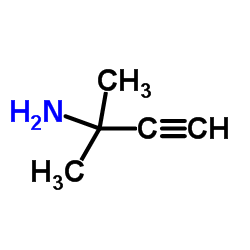
2978-58-7 |
| Literature: Kopka, Ihor E.; Fataftah, Zacharia A.; Rathke, Michael W. Journal of Organic Chemistry, 1980 , vol. 45, # 23 p. 4616 - 4622 |
|
~89% 
2978-58-7 |
| Literature: Geri, Roberto; Polizzi, Carmela; Lardicci, Luciano; Caporusso, Anna Maria Gazzetta Chimica Italiana, 1994 , vol. 124, # 6 p. 241 - 248 |
|
~% 
2978-58-7 |
| Literature: Journal of Organic Chemistry, , vol. 45, # 23 p. 4616 - 4622 |
|
~99% 
2978-58-7 |
| Literature: Rajagopal, Basker; Chen, Ying-Yu; Chen, Chun-Chi; Liu, Xuan-Yu; Wang, Huei-Ren; Lin, Po-Chiao Journal of Organic Chemistry, 2014 , vol. 79, # 3 p. 1254 - 1264 |
| Precursor 4 | |
|---|---|
| DownStream 10 | |
| HS Code | 2921199090 |
|---|---|
| Summary | 2921199090 other acyclic monoamines and their derivatives; salts thereof VAT:17.0% Tax rebate rate:9.0% Supervision conditions:none MFN tariff:6.5% General tariff:30.0% |


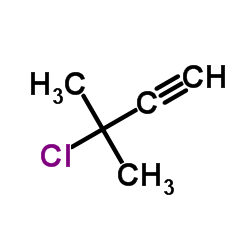

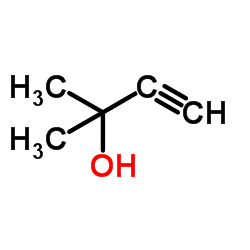

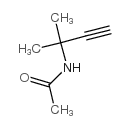


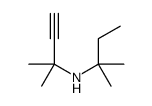
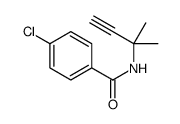
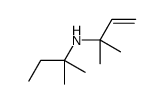


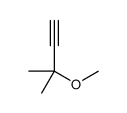
![2-(2-aminopropan-2-yl)furo[3,2-g]chromen-7-one structure](https://image.chemsrc.com/caspic/318/15399-67-4.png)